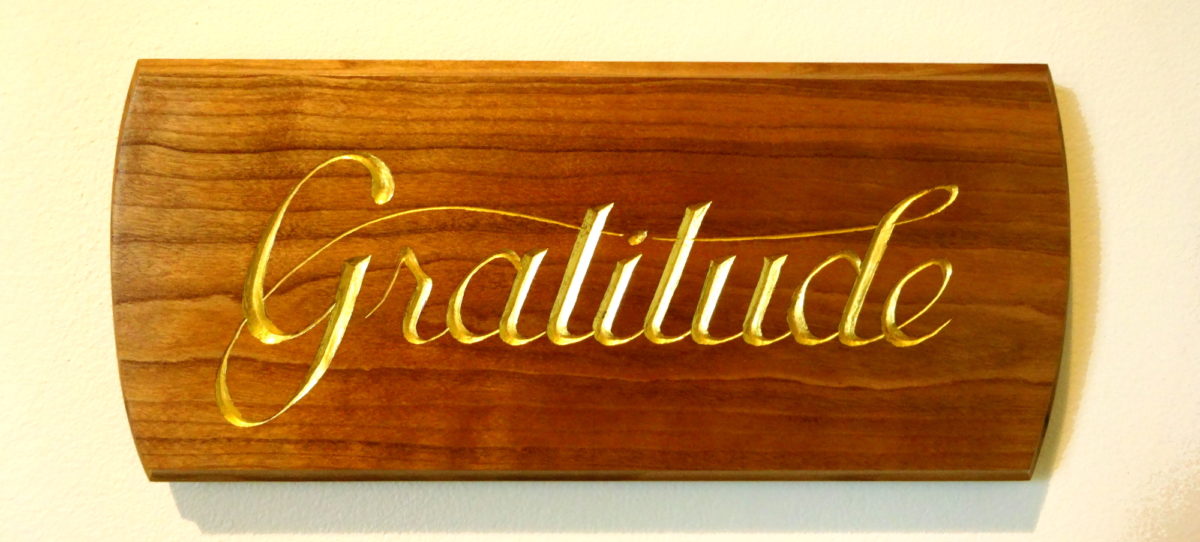
This hand carved “Gratitude” sign is about 12″ wide, carved from Cherry. The lettering is gilded with 23k gold leaf. The finish is shellac and wax. It was made similar to the previous example … without the ebonizing. More signs below…
Find Happiness through Gratitude
Try this: Every day, think about 2 or 3 things you are grateful for. Write them down (important). Repeat for a minimum of three weeks. Then, continue. This practice will put you on the path of rewiring your brain for happiness.
A True Story
A couple of years ago, our daughter commented that I was a “grumpy old man.” It appeared to be a light-hearted comment, but being a grumpy old man, I took it to heart.
Not long after, I stumbled across studies of “positive neuroplasty,” the idea that one can actually change their own brain by practicing positive activities. Many articles focused on the concept of having gratitude as a key factor for improving happiness.
Think about the good things that happen. Be grateful for them. Write them down. The repeated thought processes and the repeated writing actions literally rewire the way one thinks. Do it over and over. Rinse; repeat.
I keep a very simple “gratitude journal,” writing 2 or 3 things I’m grateful about each and every day. My brain is old and slow and isn’t completely rewired yet, but I am far happier than ever before.
Maybe you are completely happy with life and don’t need rewiring, but just in case, here is something that might help you too.
The Science
Shawn Achor tells us that we have things backward. That in addition to the very common human bias toward skepticism, we’ve been taught that “If you work hard, you will become successful, and once you become successful, then you’ll be happy.” Success first, happiness later. How’s that working out?
Shawn’s research (positive psychology) and research of many others in the neuroscience field show that we have it backwards. That if we find happiness first, success will follow. Happiness is the precursor to success, not merely the result.
Turning Positive
In late 2015, a lot of research about positive thinking, both in the field of positive psychology and in the field of neuroplasty, culminated with a widespread theme “Rewire Your Brain in 21 Days.” That theme popped up on Facebook and other social media in September as a number of articles accumulated into a critical mass. Maybe it was positive neuroplasty week? A lot of articles appeared all at once. Focusing on gratitude is at the center of the research and the advice. The short story: Many of the articles encourage finding three things to be grateful about every day. Try it. Think about the good things that are happening. Be grateful for them. Write them down. The repeated thought processes and the repeated (writing) actions are literally rewiring the way you think. Do good things often enough and think good things often enough and you’ll start to experience more and more good things.
As of this 2017 update, the theme has been hijacked and is being used to sell very expensive courses about all kinds of success topics.
Short bibliography:
- The Happiness Dividend – Shawn Achor
- The Happiness Advantage – Shawn Achor
- The Happy secret to better work – TED talk
- Scientific Proof That Being Thankful Improves Your Health
- 7 Scientifically Proven Benefits Of Gratitude That Will Motivate You To Give Thanks Year-Round
- UPDATE – Added per Antonio’s comment: “The Shift” a film by Wayne dyer. This particular version is the original film in English, but has Spanish subtitles. They’re a bonus for those of us slowly learning Spanish. Watch for the line “El viento se siento bien,” and compare to the English. 🙂
THANKS Antonio!
Related product:
Make Gratitude a habit. Rewire your brain. The Five Minute Journal gives you a delightful tool for building your gratitude habit. It has just the right ingredients for making the habit easy to get started and continue. It’s loaded with amazing advice. Give it a try!
Footnote – How I think I became a grumpy ole man
Now, they tell us! … 9 years after retiring from a successful 40 year career in the information technology industry.
If “positive neuroplasty” is true, can the opposite, “negative neuroplasty” also be true? I think so. You see, most of my “career” revolved around fixing things, from repairing broken punched card tabulating machines decades ago, to resolving complex problems in modern software more recently. By default, that work starts off negative; look for what’s wrong.
Then, I spent the latter half of my career in the best industrial research facility on the planet, and there the scientific process ruled supreme. The basis for the scientific process is to test and try a theorem until it can be proven false. Very rarely can a theorem (except plain geometry) be proven absolutely true. Again, an environment that works from negative to positive.
Looking for broken things, looking for falsities, and being skeptical are to my point of view the fuel for negative neuroplasty … and contributors to me becoming a grumpy ole man.
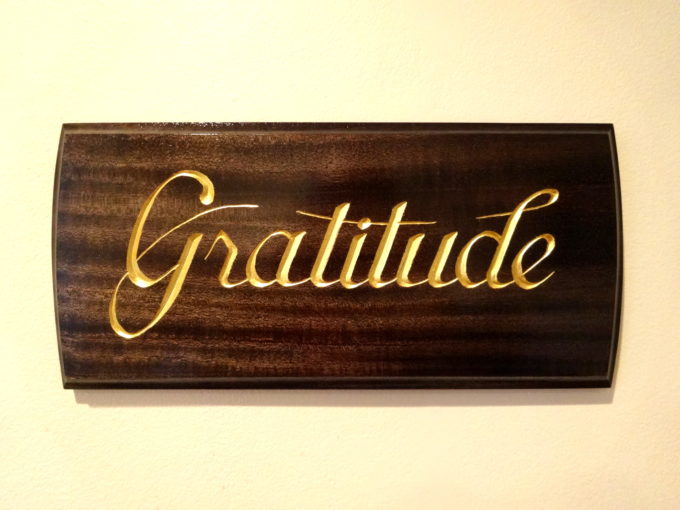
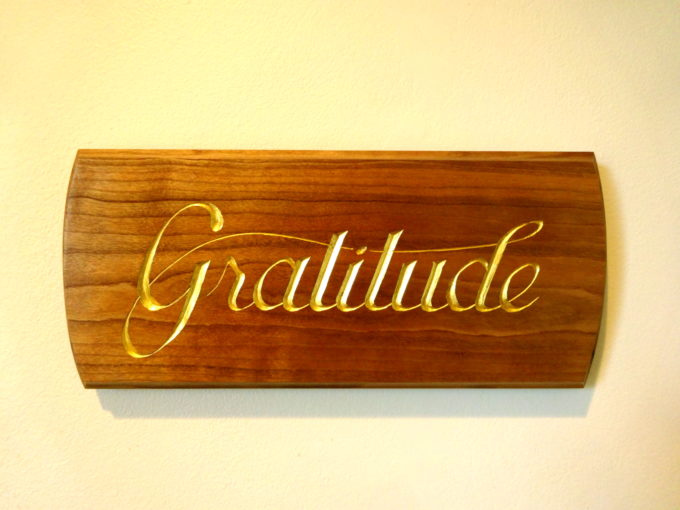
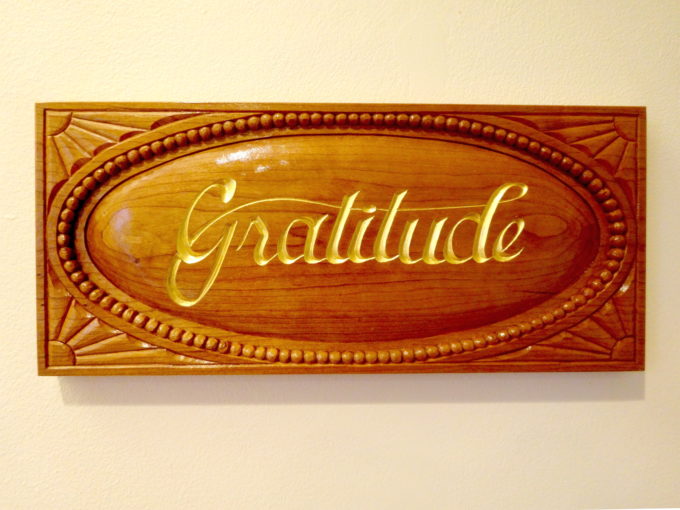
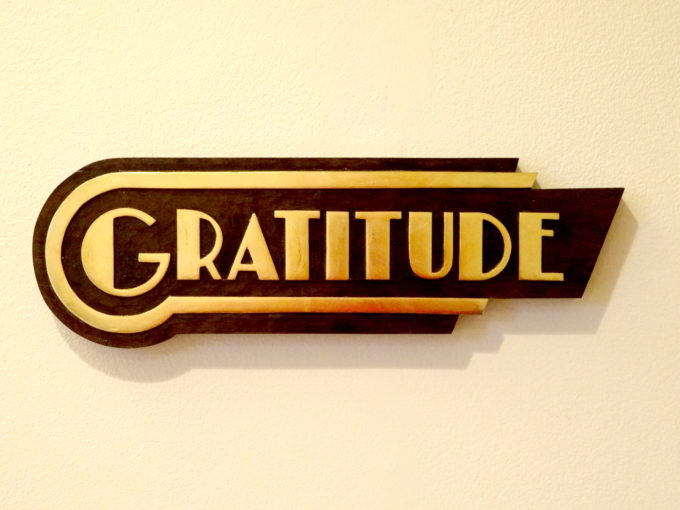
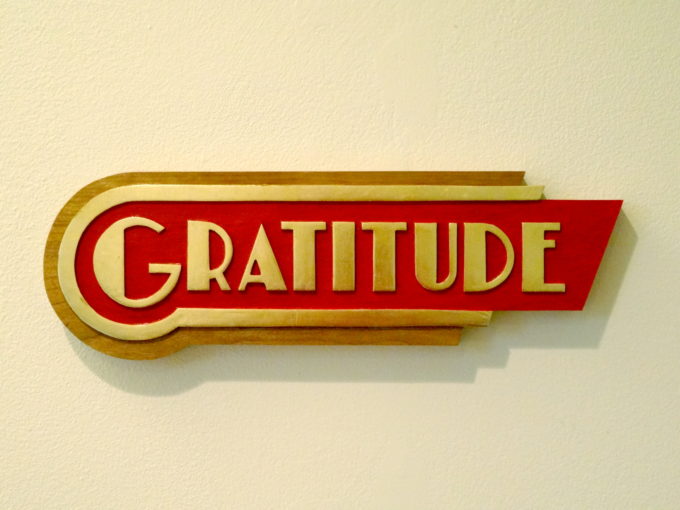
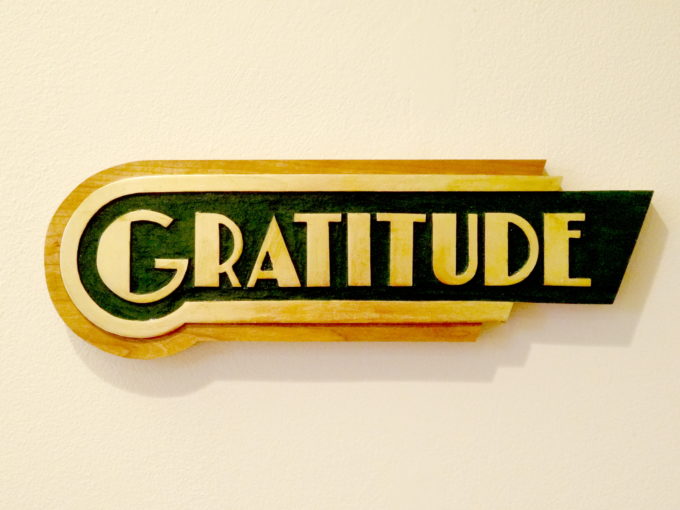
The sign and lettering look great as per your usual.
I’m grateful that I read this post. I needed it today, so thank you Bob!
Hope your day turned out well Greg. Many more to come!
Great post, Bob,
Similarly I completed a career as a surgeon. The discipline and tenants are the same. I have read similar literature but something about your carving – maybe the grace, the cherry, or the gold – started the rewrite in a most stunning way. So, to write down a few gratitudes, I am grateful for your posts, your videos about the foot powered lathe and your fixing (you are back at it again!) Mary Mays website.
Larry
Thanks Larry!
… and I’m sure there are many many people who are grateful for the skills you practiced and the problems you solved.
All the best!
I worked a bit fixing punch card readers, and later mainframes for IBM. That’s why I became a carpenter for 40 years.
I always assumed the best industrial research facility on the Planet was Bell Labs.
RE: best industrial research facility
There are so many ways to measure “best” that both Bell Labs and IBM can claim the title. Notable areas of research, significant inventions, number of Nobel laureates, size of the patent portfolio, value of what the inventions and patent holdings contribute to the parent company (and to industry and humanity), ownership by a government created monopoly compared to ownership by a successful commercial enterprise, size and scope of current research activity, number of employees (or PhD count), number of locations around the world, and on and on.
I once lived in a town where all three major banks claimed to be best, and they were all correct. One had the largest number of accounts, another had the largest value of deposits, and the other had the largest value of reserve funds.
Thanks for stopping by Larry.
Great carving!
It’s a very unusual reading on the “woodworking blog theme”… A bold one 🙂
But that’s why i started woodworking more often… It made me happy and still do!
My background on positive “thinking” and “rewriting my thoughts” started a few years ago and it took me a while to really “get it”.
If I may, Bob, I’ll share with you a movie title “The Shift” by Wayne Dyer.
If its not appropriate then delete this comment.
All the best
Thanks for the suggestion Antonio. I’ve often found Wayne Dyer’s advice helpful and will go find that film.
Your happiness with woodworking shows in the quality of the work we see on your blog. Get yourself to the workshop and be happy more often! 🙂